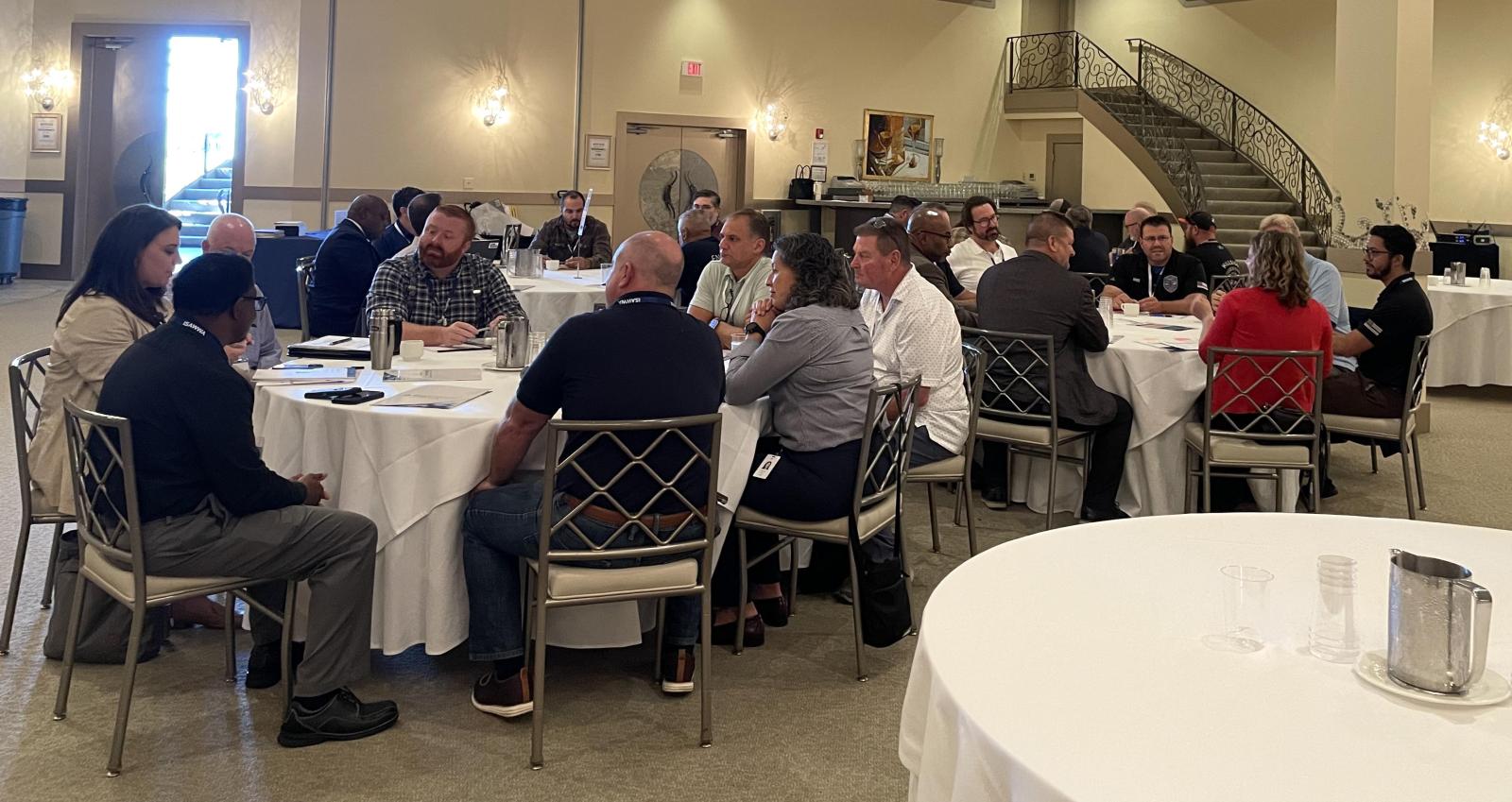
Key Takeaways from a Roundtable Discussion on Lead Service Line Replacement
Nearly 100 people attended a recent event hosted by Cook County TAP and the Illinois Section AWWA, Pulling Together Your Lead Service Line Replacement Plan: Ask the Experts. Convening stakeholders from municipal public works, water utilities, engineering and consulting firms, construction companies, and more shared their experiences—and challenges—in lead service line replacement (LSLR). Attendees worked together to identify potential solutions and additional resources needed to address future challenges. Clear themes emerged from the dynamic roundtable discussions and Cook County TAP is excited to share key takeaways.
Takeaway: LSLR Coordination Remains Challenging
Coordinating lead service line replacement has proved challenging, especially because it necessitates access to private property and cooperation from residents, building owners, contractors, and municipal staff. As such, an effective LSLR program requires multiple touches with various stakeholders. Inadequate coordination can lead to a lack of trust, duplication of efforts, and decreased productivity. This points to the need for a coordinated approach to LSLR, including a robust assessment of how and where breakdowns happen. Attendees suggested potential solutions and approaches to improve coordination, notably:
- Establish cross-departmental scheduling and communication tools for municipalities
- Institute regular meetings with input from water system managers
- Appoint interdepartmental LSLR liaisons for municipalities
- Foster a culture of open communication
- Provide internal and external (e.g., contractor) workforce training
Takeaway: We Have to Work Hard (and Smart) to Ensure Resident Participation
We know that resident participation is an integral component of an effective lead service line replacement program—and communication throughout a resident’s entire experience is critical. Attendees noted that resident participation requires multiple touches, whether the issue is communicating lead-in-water concentrations, scheduling line identification, or completing the replacement.
Attendees stressed the importance of understanding the residential profile, including the primary language spoken in a household and the type of messaging that will best resonate with a given community. A residential profile should also identify the best messenger, as this person is often entering a home or property and obtaining signatures. Attendees identified strategies to establish trust and participation among residents, including:
- Post pictures of LSLR staff (including plumbers and other service providers) on community websites
- Provide staff with uniforms, badges, or other official identifiers
- Engage community or neighborhood-based organizations to identify trusted messengers
- Explore and implement local ordinances that encourage resident participation in the LSLR process

Takeaway: We Need Improved Processes for Funding
Considerable staff time, expertise, and materials are needed for the full arch of lead service line replacement, from initial water testing to final restoration, and everything in between. Which also means that municipalities need clarity and assurances of available funding—including how much they will receive, when they will have it, and in what form (e.g., grant, loan, or other). Funding is typically dependent on the identified need, which is primarily established by the lead service line inventory (LSLI). Yet, even with a robust LSLI in hand, attendees noted a need for greater clarity on funding: What funding is available now and what are the expectations for future funding (to plan for the long-term economic impact on a community).
Further, attendees advocated for lower barriers to LSLR funding and more support throughout the entire process, including applying for and managing funding. We heard several potential solutions to address this barrier, notably:
- A clear and streamlined process for accessing LSLR funding
- Acknowledgment (from funders) that LSLR is not a standalone project (rather, it must be integrated into a comprehensive capital improvement or water infrastructure plan)
- Additional funding opportunities to make LSLR more affordable, especially in the form of grants or principal forgiveness
The Overall Takeaway: Consistency is Critical and Difficult to Maintain
All the above themes and takeaways could be summarized by a need for greater clarity and consistency—consistency in how we design and implement an LSLR program, consistency in how we communicate with residents, and consistency in funding. For example, attendees repeatedly noted that consistency was a primary ingredient in establishing trust among residents and stakeholders, as well as between community leaders and legislators/regulators. This includes consistency of services, and the stabilization of regulatory and administrative requirements.
Attendees recommended several strategies to improve and maintain consistency:
- Address lead service line replacement as a part of comprehensive capital improvement planning
- Analyze the full scope of support needed to implement and manage LSLR and use it to support requests for funding
- Identify leadership committed to advancing lead service line replacement efforts
Together, we can get the lead out. Cook County TAP will continue to share more “real-life” insights like this, as well as resources and events to help municipalities navigate lead service line replacement. Please subscribe to updates to stay informed.
